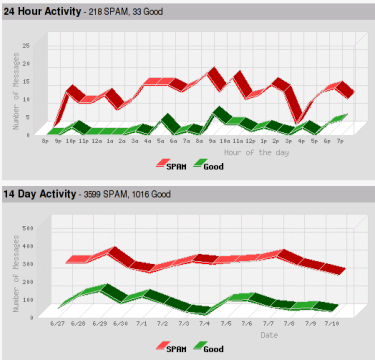|
Thursday 20th of November 2025
::
  |
Dspam - Community Driven Antispam FilterDSPAM is a scalable and open-source content-based spam filter designed for multi-user enterprise systems. On a properly configured system, many users experience results between 99.5% - 99.95%, or one error for every 200 to 2000 messages. DSPAM supports many different MTAs and can also be deployed as a stand-alone SMTP appliance. For developers, the DSPAM core engine (libdspam) can be easily incorporated directly into applications for drop-in filtering DSPAM has been implemented on many large and small scale systems with the largest being reported at about 350,000 mailboxes. DSPAM is an adaptive filter which means it is capable of learning and adapting to each user's email. Instead of working off of a list of "rules" to identify spam, DSPAM's probabilistic engine examines the content of each message and learns what type of content the user deems as spam (or nonspam). This approach to machine-learning provides much higher levels of accuracy than commercial "hodge-podge" solutions, and with minimal resources. DSPAM's best recorded levels of accuracy have included 99.991% by one avid user (2 errors in 22,786) and 99.987% by the author (1 error in 7000), which could be ten times more accurate than a human being! Features
Dspam HistoryDspam was originally invented by Jonathan Zdziarski roughly between 2003 to May 2007. In May 2007 Jonathan allowed the rights of the dspam to be acquired by Sensory Networks. In December 2008 Dspam was forked as dspam-community and hosted on Sourceforge (this fork has now been closed). In Early Jan 2009 Sensory Networks announced that they could no longer support the project an offered the project to the dspam-community project. On the 12th Jan 2009 Sensory Networks granted the rights to dspam to the community project. This includes:
 |
|
2009-2011 The DSPAM Project
|